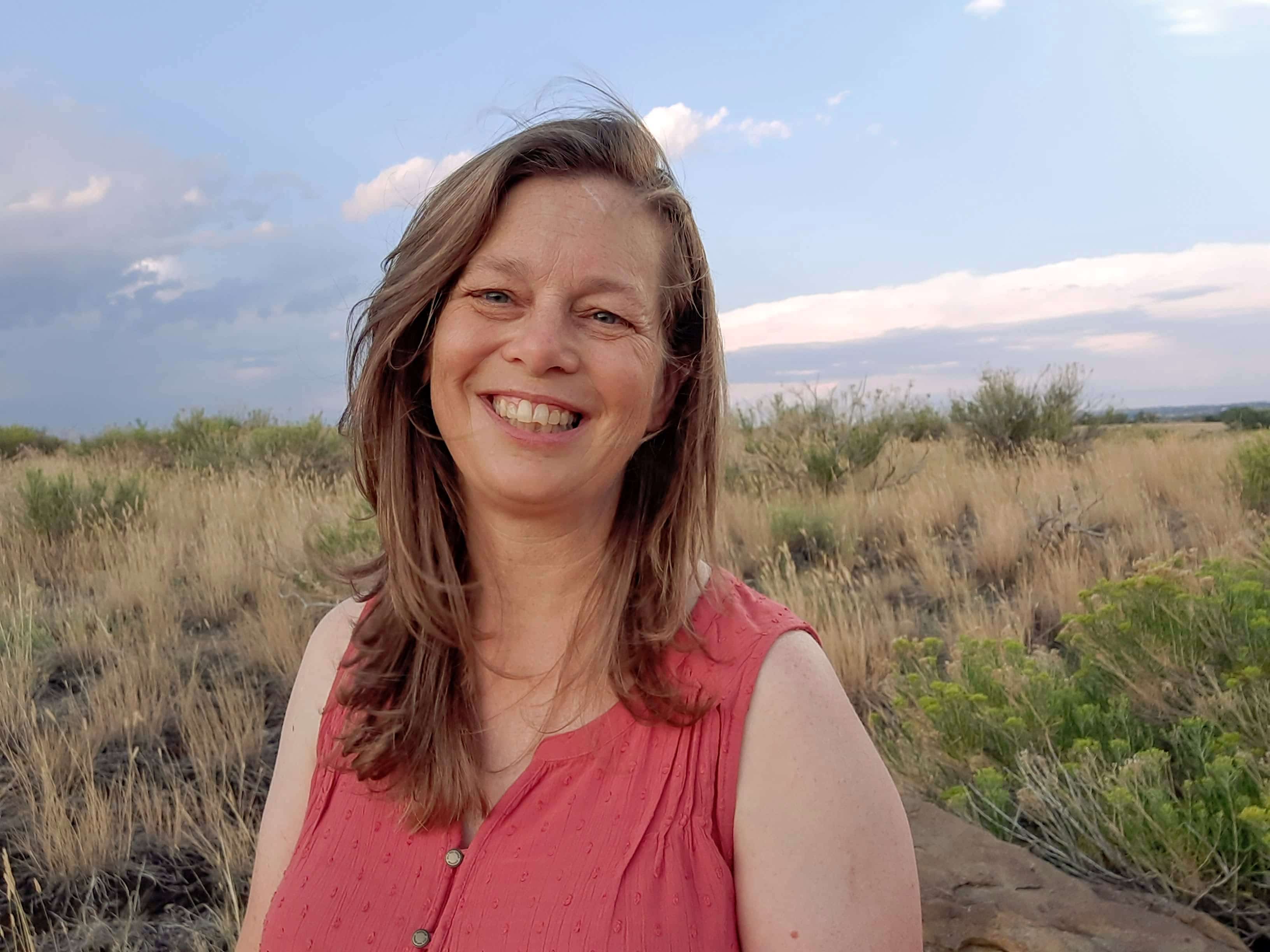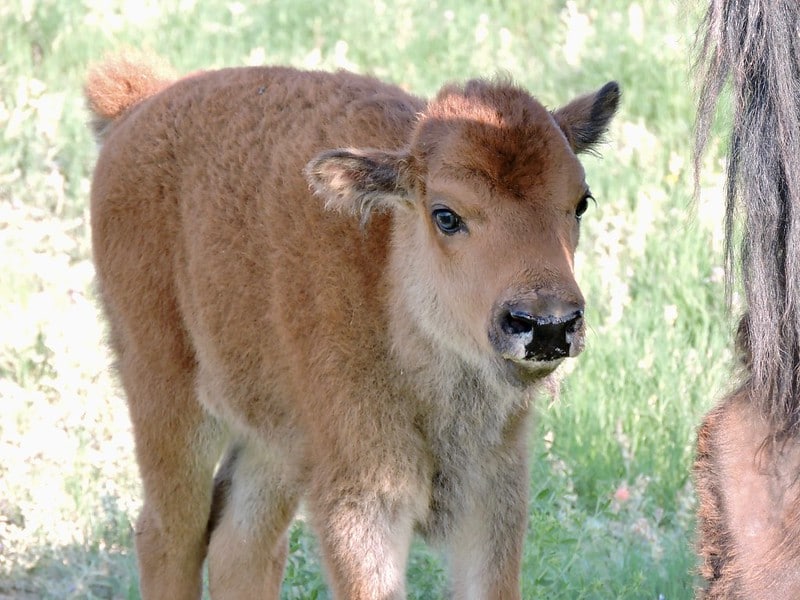
Susan Crick is the Development & Communications Director for Southern Plains Land Trust.
Bison or Buffalo?
In North America, bison are often called buffalo. While many of us grew up using this popular nickname, it is not a biologically correct name. Worldwide, bison and buffalo are distinctly different animals.
An easy way to tell a bison from a buffalo is by looking at their body shape and horns. Bison have big, muscular shoulder humps and large, heavy heads. A buffalo’s head and shoulders are smaller and look more proportional to the rest of their body and they lack a shoulder hump. Buffalo have horns that resemble a handlebar mustache (imagine a water buffalo). The horns are large, cover the head like a helmet, and curve downward and then back up. Bison have smaller horns that grow out and upwards from the sides of their heads.
Last week, a baby was born on the prairie. Granted there are babies born every day, but this one was special. Its arrival is celebrated by Southern Plains Land Trust (SPLT). With this birth, we are watching our vision to recreate the American Serengeti come to life before our very eyes.

Newborn bison weigh in at 30 to 70 pounds. They are vigilantly protected by their mother and the herd. It was a couple days before SPLT staff were able to safely approach the herd to capture photos of the bison calf.
In December, SPLT welcomed ten genetically-pure bison to the Heartland Ranch Nature Preserve expansion area to establish our conservation herd. These majestic beasts once roamed the Great Plains by the millions but faced extinction more than a century ago. Many of the remaining bison herds in captivity, such as SPLT’s non-breeding sanctuary herd, likely contain cattle genes. Bison and cattle were interbred in the early 1900’s in an attempt to make bison more docile and to save the species. Only a handful of wild, pure bison survived.
Our conservation herd carries the genetic lineage of their wild ancestors that persisted in and around Yellowstone National Park. The birth of this bison calf represents a hope for the future. A hope that wild bison will once again roam on the southern plains.

Bison calves will nurse for 7 to 13 months. They become sexually mature at about 2 to 3 years old and may live 14 to 24 years in the wild. Bison are the largest mammal in North America. Adult females will typically weigh over 900 pounds and adult males can weigh over one ton. (We are uncertain yet if this calf is a male or female.)
We are grateful to our partners that made it possible to establish a bison conservation herd at Heartland Ranch Nature Preserve. These bison were part of CSU’s research herd managed by the College of Veterinary Medicine and Biomedical Sciences. Defenders of Wildlife provided funding to help bring the bison to Heartland Ranch and have long advocated for the restoration of wild bison across their native range.
We are thankful for our members, like you, that make it possible to buy, protect, and rewild prairie with your donations. As the bison herd grows, they will need thousands of acres of undisturbed land to roam. By providing a home for the bison, we are also creating homes for countless other prairie wildlife species. Plans are already in the works to expand Heartland Ranch Nature Preserve from its current size of 25,000 acres to over 40,000 acres of native grassland. We invite you to join us in making this vision by making a gift to SPLT for land acquisition.

Recent Comments